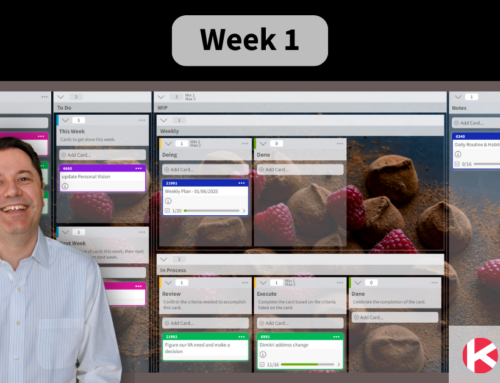
Project management is a special skill to have. It needs an extremely organized leader who is able to multitask, handle stressful situations, deal with crises satisfactorily, and be a strong people person.
Having a system also helps.
In our digital age of SaaS tools, there’s plenty out there to help you execute your project, but it’s more the how than the which. How can you best manage your project?
There are three methodologies that we’ll discuss in this article: Kanban, Agile, and Scrum.
When to use these methodologies?
These methodologies might be familiar if you work in project management, human resources, or as a software developer or engineer. Kanban, Agile, and Scrum help project management and software development teams collaborate on different projects.
These three frameworks make it easy to finetune your project details, achieve the desired result, and track key performance indicators (KPIs). It’s extremely important to properly prepare your project structure and preparation for execution. When creating a project you need to think about the whole structure ahead which includes not only the methodology but the people working on the project itself.
For these software projects, you need to find the right people that are able to follow the protocol and ensure project success. The likes of kanban, agile, and scrum methods have distinct functions. Know their differences to plan, hire, and execute appropriately for your software project.
Hiring for projects
It’s always an uncertain choice if you should outsource part of your project. Firstly, your team should be able to handle it, and secondly, can you trust a contractor to come in and walk away without stealing your company’s secrets?
It doesn’t need to be so dramatic. Yes, you do need to outsource. Some projects can add an extra strain to your full-time staff workload. You want to avoid burnout as best you can and keep your employees productive.
Hiring a contractor can be quite beneficial. If they do a good job you can contract them for future projects with less time spent onboarding. For software developers, you can provide a list of programming pre-employment test questions to ensure you’re on the same page. Also, request that they sign an NDA binding them from sharing your sensitive data, and draft up a contractors agreement.
Most importantly, ensure they’re comfortable with the methodology you’re choosing for your project.
Understanding Kanban
Kanban has existed since the 1940s when Toyota developed it to increase production efficiency. Although it was created to enhance production line optimization, it has been adjusted for agile software development. Kanban ensures developers deliver on time without overburdening themselves. (Check out our ready-to-use Software Development board template or the board we use to develop Kanban Zone.)
Also, in the Kanban framework, teams can represent work items visually using a Kanban board. This enables team members to view the stage of the work at any time, promoting effective collaboration. For instance, with the Kanban Zone board, you visualize, measure, and manage workflow, limiting work in progress.
Kanban methodology follows six basic principles:
- Visualization of the workflow: Studying and understanding the current workflow helps you visualize how different tasks are progressing among team members.
- Limitation of work-in-progress: By limiting work-in-progress, teams can complete the task they are working on before transiting to the next one.
- Managing workflow: Kanban methodology allows teams to manage and improve workflow. So you need an in-depth understanding of the methodology to complete work faster.
- Creation of clear process policies: It is essential to create clear policies, guidelines, and rules for teams to follow to enhance cooperation and harmony.
- Implementation of feedback loop: A feedback loop allows team members to tell each other what they did the previous day and what’s on their to-do list for the day. This makes it easy to update and sync information.
- Continuous improvement: Kanban methodology allows teams to continuously evaluate and improve their work to make it more productive and effective.
Advantages and limitations of Kanban
The Kanban methodology has benefits, but it also has disadvantages. The following are some of the advantages:
- It helps keep tasks organized and keeps teams from getting overburdened.
- It allows teams to continually improve and identify problems in their workflow.
- It helps teams visualize the workflow, making it easier for team members to sync.
- It allows teams to set limits on work-in-progress, which helps them focus on one task at a time.
The limitations of the Kanban methodology include the following:
- Team members must be disciplined and follow the process guidelines for it to be successful
- The Kanban board is not ideal for complicated projects meant to last long
- It is hard to implement Kanban if there is no structure
- Kanban does not have timelines for completing different tasks
When should you use Kanban?
If you want your team to maximize efficiency and avoid rigid processes, choose Kanban. Since teams can manage tasks without overburdening themselves and track the progress of each member, Kanban is an excellent choice for teams working on software projects.
Understanding Agile methodology
Agile is a framework used in project management. It allows teams to break down projects into different phases, known as ‘sprints.’ Once the team completes a sprint, they examine their work to find what requires adjustment before starting the next sprint.
With the Agile methodology, teams can deliver value faster and with fewer mistakes. In 2001, 17 software developers who wanted a more linear way of product development created the Agile Manifesto. The manifesto contained the four pillars of Agile and the 12 principles of Agile for software development.
The four pillars of Agile
The four pillars of the Agile framework are:
1. Individuals over processes and tools
Teams using the Agile framework value teamwork and collaboration over personal efforts or the traditional approach to work.
2. Working software over comprehensive documentation
Agile teams value working software over documentation. So, whether it has to do with reporting, evaluating, presentation, or anything else, creating good software is better than extensive documentation.
3. Customer collaboration over contract negotiation
In the Agile framework, customers guide teams’ decisions when developing software. So, Agile teams value customer collaboration over contract negotiation.
4. Responding to change over following a plan
One of the benefits of the Agile methodology is flexibility. Teams can modify strategies and workflows anytime without negatively impacting an entire project.
The 12 principles of the Agile framework
The 12 Agile principles were created from the four pillars, and they can be adapted to meet the needs of different teams. Here are the 12 principles:
- Customer satisfaction using early, continuous improvement and delivery
- Welcome changes, even if it’s late in the project
- Frequent value delivery
- Break project silos
- Build projects with motivated team members
- Effective communication occurs face-to-face
- Creating a working software is how to measure progress
- Have a sustainable work environment
- Enhance agility with continuous excellence
- Simplicity is essential
- Teams that are self-organized have the most value
- Reflect and adjust your work system regularly to increase the effectiveness
Advantages and limitations of the Agile framework
The following are the known benefits of the Agile methodology:
- Teams can shift strategies without disrupting the workflow
- Agile promotes collaborative work
- It focuses more on customer needs and satisfaction
- Agile increase the adaptability of teams and the quality of products
- It improves the predictability of risks, allowing teams to mitigate them effectively
Agile also has some shortcomings, including the following:
- Poor resource planning due to the unpredictability of costs, time, and resources needed at the beginning of a project
- Limited documentation since Agile focuses more on creating a working software
- Fragmented output since teams are required to work in sprints
- Difficulty in tracking processes as Agile delivers in increments
When should you use Agile?
The Agile framework is the preferred choice for developing software quickly and effectively. This is because Agile focuses on team collaboration, flexibility, and experimentation when responding to customers’ feedback and their changing needs. Also, teams can stay Agile when introducing fast-paced products.
Understanding Scrum
Like Kanban, Scrum is an Agile framework that allows teams to break larger projects into smaller, manageable tasks that can be completed in sprints. With Scrum, teams can focus more on iteration and continuous development.
Using Scrum methods, teams can collaborate and quickly adapt to changes in the workflow without any negative impact on the project’s budget or timeline. The Scrum sprint lasts for two weeks, and teams have targets they must meet at the end. Also, teams have daily stands where they meet for 15 minutes and coordinate their daily tasks.
Furthermore, Scrum teams have retrospective meetings at the end of a sprint. During these sessions, the team reflects on the sprint activities and identifies where they need to make adjustments.
Scrum operates on six basic principles and has five core values.
The six Scrum principles
Scrum uses these six principles to keep teams focused and projects on track.
- Control over the empirical process: Transparency, inspection, and adaptation are the guiding principles of Scrum teams.
- Self-organization: Scrum promotes shared ownership of tasks for more creativity and dynamism. So, every member of the Scrum team handles their work themselves.
- Collaboration: Teams drive better results by working together during and after a Scrum sprint.
- Value-based prioritization: Scrum allows teams to prioritize their tasks to deliver the best business value from the beginning.
- Timeboxing: Scrum allows the team to timebox work and move to the next one. This helps them improve future tasks.
Iterative development: The first product built using the Scrum framework will not be perfect. However, teams can work iteratively to adapt to customer needs and modify products based on value prioritization.
The five values of Scrum
The five values of Scrum that teams must adhere to are:
- Commitment
- Courage
- Focus
- Openness
- Respect
Advantages and limitations of scrum
Here are the benefits of using Scrum:
- Scrum offers teams a continuous and repeatable cycle to complete tasks within a short time
- It allows teams to create clear checkpoints and expectations for tasks
- Scrum enables teams to collaborate and review their work daily
The limitations of Scrum are:
- It is not ideal for projects with a longer timeframe or inconsistent conditions
- Without a clear structure, it is challenging to implement
When should you use Scrum?
Use Scrum if you have a large project and want to break it into bits. Scrum is also the methodology for controlling delivery and getting regular feedback when testing a product. Additionally, use Scrum to explore solutions in iterative cycles and manage expectations while working towards a favorable outcome.
Kanban vs. Agile vs. Scrum: which is best for your project?
The requirements of your project should guide your choice between the three frameworks. However, remember this before making a choice:
- Kanban is best if you want project flexibility and continuous refinement of the workflow
- Agile is best if you desire fast adaptations without affecting the entire project or the software release date
- Scrum is best if you can continuously devote time to your project and want quick results
Choose the right framework for your business
Kanban, Agile, and Scrum have their benefits and limitations. Therefore, carefully examine what your team and project need before choosing. But whichever you choose, it will enable you to manage your team and the project process, enjoy flexibility, and collaborate with team members.
This was a guest blog. Please review our guest blog disclaimer.
Learn to Work Smarter, Not Harder!
Get our top articles weekly.
Table Of Contents
Discover many more posts…







